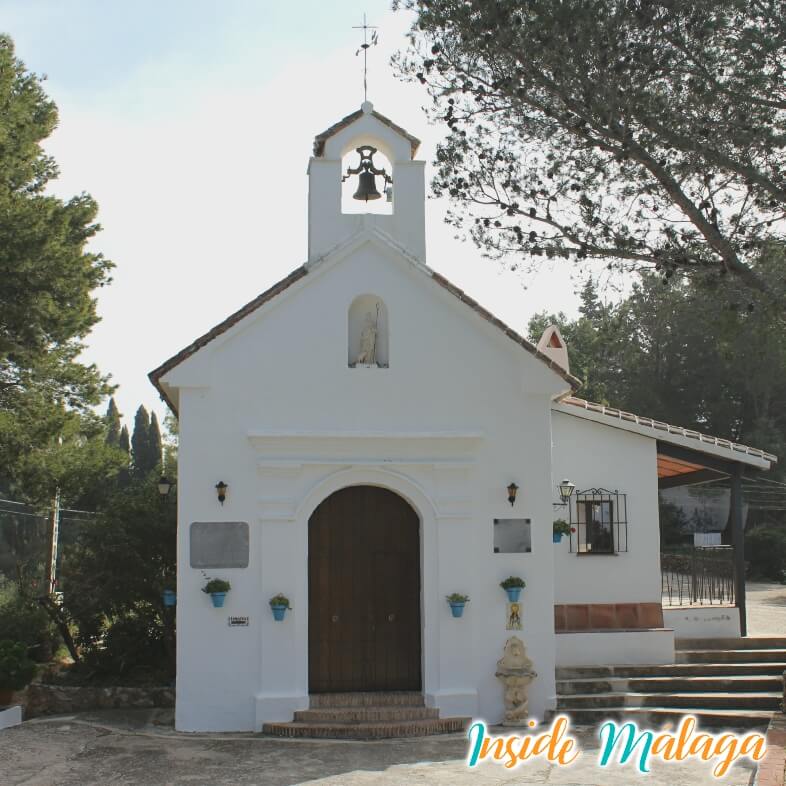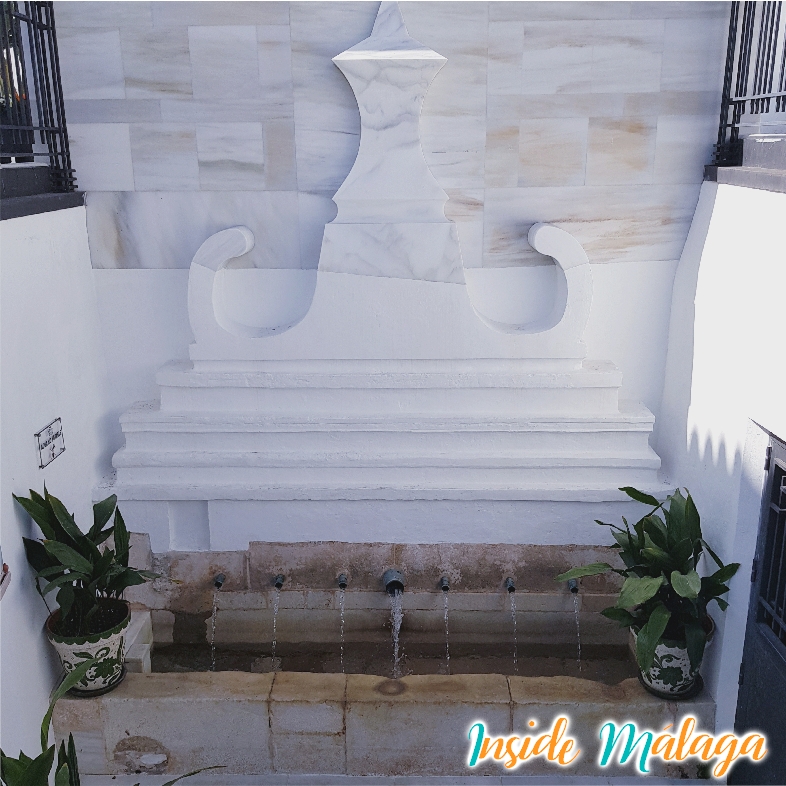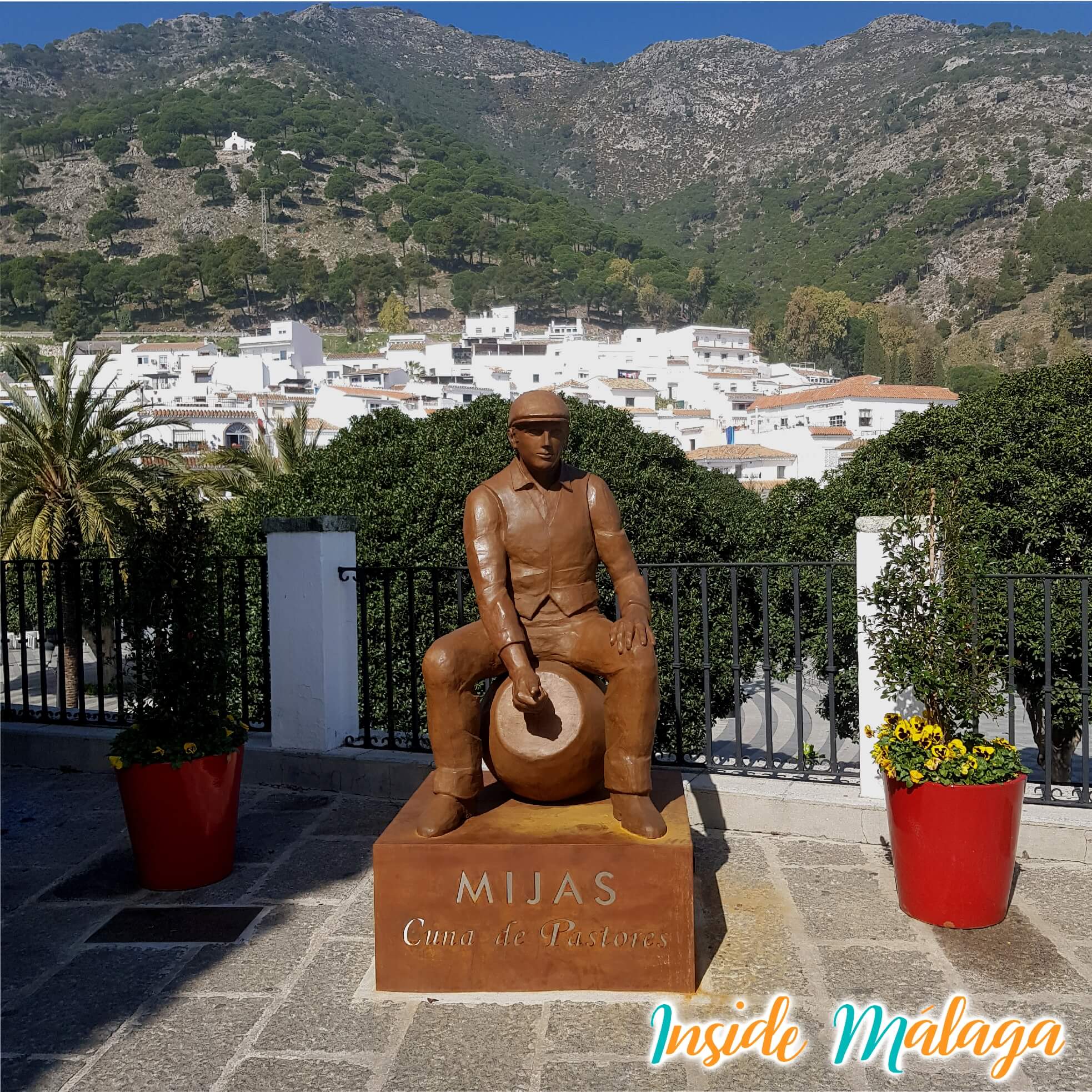Mijas is undoubtedly one of the most captivating and complete villages on the Costa del Sol. Mijas Pueblo stands out for the radiant whiteness of its houses, the unparalleled beauty of its streets, and the impeccable preservation of its historic center in the Sierra de Mijas, leaving no visitor indifferent. This charming village offers an experience that goes beyond the visual; it is a place where tranquility and traditional charm blend seamlessly with the diverse offerings of Mijas Costa, including idyllic beaches, hidden coves, picturesque trails, and a dozen top-notch golf courses, making Mijas an ideal destination for a perfect vacation.
Below, we provide detailed information about Mijas. If you want to discover what to see, do, and visit in Mijas Pueblo, you can click on this link.
Where is Mijas located
Mijas located 35Km from Malaga capital with a population of 82.747 inhabitants. The municipal term has a dimension of almost 149 km square.
The origin of the name Mijas
During the Roman domination it was a fortress destined to guard the coast, and they called it “Tamisa“. When the Arabs arrive they call the town “Mixa“.
Denonym of the people of Mijas
The inhabitants are called “mijeño or mijeña”.
Where to park in Mijas
Mijas Pueblo: In the urban center it is mostly pedestrian and there are no parking spaces. Arriving at the main square if there is public parking for 1 euro a day.
La Cala – Mijas Costa: Arriving at the entrance to La Cala there is a large parking area on the right, where the markets and the fair are held.
Monuments and places of interest in Mijas
Mijas Pueblo
- Hermitage of the Virgen de la Peña: This hermitage was excavated in the rock between 1656 and 1682 by some friars. The mijeña tradition relates the appearance of the Virgen de la Peña in 1586 when the siblings Juan and Asunción Bernal Linaire, both shepherds, saw how a dove sat on the castle tower and transformed into the Virgin.

- Church of the Immaculate Conception: The church was built between 1540 and 1565 on the ruins of a mosque and the remains of a castle.

- Hermitage of Calvary: The hermitage has watched over the village from the foothills of Sierra Mijas since 1710. From the hermitage there are several trails to enjoy hiking in the Sierra.

- Church of San Sebastián: Located on Calle San Sebastián in the heart of the town. Built in the seventeenth century in 1672 on the ruins of an old church. Its white facade painted with lime, the Sierra de Mijas in the background and the picturesque street that surrounds it, make this place the most photographed place in Mijas Pueblo.

- Donkey-Taxi: Burro-Taxi are a traditional way of transportation in Mijas. In the 1950s and 1960s, some Mijeño workers used donkeys to get around and work. This made tourists take photos and demanded to go for a ride with the burrito in exchange for a tip, these tips often exceeded the worker’s salary. Currently, a burro-taxi stop is installed in the main square with around 60 donkey-taxis.

- The Old Defensive Wall: Outside the town we find part of the old Arab fortress, a defensive wall that was built to protect against invaders and pirates. Currently it has become a path full of the most beautiful viewpoints on the Costa del Sol.
- Gardens of the Wall: The Botanical Garden along the viewpoint of the wall is a must-see during your visit. From the gardens of the wall you can enjoy a spectacular panoramic view over the coast and Fuengirola.You can also enjoy a botanical garden with around 150 species from all over the world.

- Hermitage of San Antón: Built in the 18th century along the old road to Malaga. The temple is a simple construction consisting of a single nave and the pilgrimage of San Antón is celebrated there on January 17th. Next to the hermitage there is an old wall ruins and a monument to the fidelity of the dog.

- El Carromato de Max: Since 1972 a mandatory attraction for visitors while in Mijas. A curious museum of all kinds of miniature works of art from around the world. An example is: A “Burrito de Mijas” painted on a grain of rice or President Abraham Lincoln painted on the head of a pin.

- Plaza de Toros: The bullring built in 1900 in the area of the castle wall at the request of the neighbors, which made its construction difficult due to the geographical location. For this reason the ring of the square has the peculiarity that its oval or almost rectangular construction, there are few with this type of plant in Spain.

- Watchtower: In front of the bullring, next to a childs playground is a watchtower in good condition that was part of the wall. You can climb the tower that acts as a viewpoint over the town.

- Hermitage of nuestra Señora de los Remedios:Popularly also known as the Iglesia de Santa Ana or the Iglesia del Barrio. Located in the Barrio de Santa Ana. The temple was built in the 18th century, a simple construction consisting of a single rectangular nave. Its interior houses an old carving of the Virgen de los Remedios.

- Siete Caños Fountain: Fountain built in the 18th century that was buried and covered throughout the 1950s. In 2015, during some beautification works on Calle Agua, it was discovered. At the request and after a vote by the residents of the neighborhood, it was uncovered and restored to highlight the importance of the village’s water culture.

- La Plaza de la Constitución Fountain: This fountain was built with the stones and rocks that the flood of November 2, 1884 dragged away.

- Ancient Forge Caves: Located in Calle Barrio de Santa Ana. A forge is a place or rather a hearth used by blacksmiths to forge and melt metals.

- CAC Mijas: Center for Contemporary Art

- Monument Cuna de Pastores: Work of José María Córdoba in recognition of Mijas as the cradle of pastoral care that has been a benchmark in this tradition for almost four decades.

- Ermita del Puerto: This small hermitage was built along the road to Malaga in 1875 with money contributed by the faithful. The original name was Ermita del Señor de la Buenamuerte. Formerly the hermitage was at the level of the old road in the nineteenth century, but due to the work the new road was excavated several meters that leaves the hermitage on a hill.

La Cala
- Battery Tower of La Cala Mijas: built in the 18th century as part of the line of fortification and surveillance system of the Malaga Mediterranean coast to prevent coastal attacks by Berber pirates. Currently the tower houses the Interpretation Centre of Watchtowers of the Historical-Ethnological Museum of Mijas.
- Torre Nueva
- Church of Santa Teresa

Las Lagunas
- The Church of San Manuel: Located on Calle Fuscia: This parish has its origin in 1984 in a small chapel in the albero where Our Lady of Fatima is venerated. The only church in Las Lagunas was built in 1992, celebrating its first mass on December 24, 1993. The head of the church since 2016 is San Manuel, the Malaga bishop Manuel González who was canonized in the same year.

- Danish Church: Located on Calle Dinarmarca. A Danish evangelical church in order to carry out cultural and social activities, promote Mijas and facilitate the integration of the Danish community in the Mijas community.
 Margrethekirken
Margrethekirken
El Faro
- The lighthouse Tower Calaburras: It was built in 1575 as part of the line of fortification and surveillance system of the Malaga Mediterranean coast.
Calahonda
- Torre de Calahonda: It is a watchtower with a height of 10 meters built in masonry in the 16th century. This tower is part of a chain of watchtowers along the southern coast to protect the coast against North African pirates. The tower is currently located on a private estate that the Mijas council is trying to recover.
- Sjømannskirken
Where to eat and drink in Mijas
- Restaurant Salarte: Located in La Cala Hills on Calle Tomillo de la Torre. A restaurant with a cozy design with very attentive service. The dishes of good and high quality and abundant quantity. The house specialty is grilled meat. We recommend the pil-pil prawns as a starter, and the varied plate of grilled meats.
For more information about Mijas Village: visit the City Council page
